Diablo IV Review
Better the devil, you know
Diablo is in no rush to change. While other franchises release sequels every few years, it has been a long time between health potions for the last two Diablo games. Released in 2000, Diablo II sustained itself with a great expansion and excellent replay value. Its successor, Diablo III, appeared twelve years later, although it controversially required players to be online at all times. Diablo IV takes the online malarkey a step further, by creating an open world and sprinkling it with basic MMO features. Under the hood, it provides similar isometric hack-and-slash action to the last game, with five varied classes, energizing combat, and decent loot. It also has magnificently dark and detailed environments to explore. With the developers' long-term strategy, Diablo IV could be popular for years. Right now, it is a great time-sink that should please action-RPG gamers and franchise veterans alike.
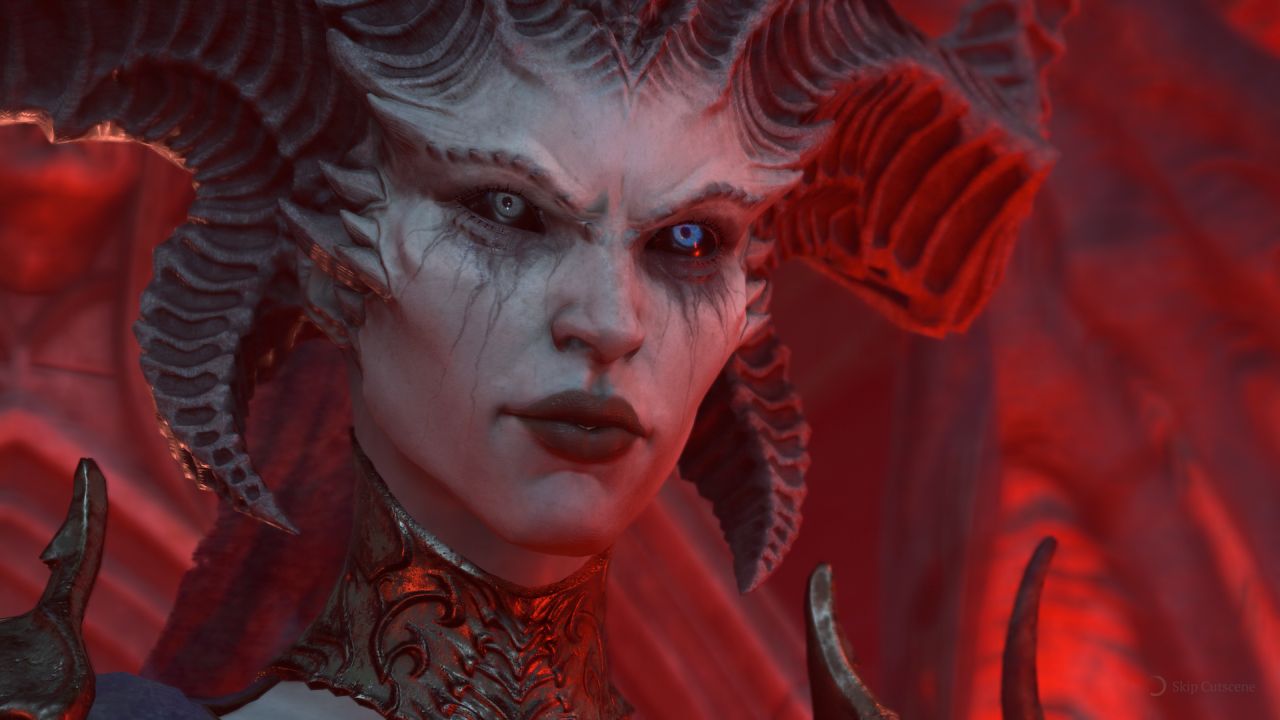
The story in the fourth entry focuses on Lilith, the demon mother of Sanctuary. She has returned to the mortal realm to bring chaos. Hell’s denizens have emerged and some humans have succumbed to her hypnotic influence, turning into cannibals or cultists. One such group forces you to drink Lilith’s blood in the prologue, granting you an unnatural link that puts you in a position to take her down. With help from Horadrim scholars, you follow Lilith’s trail of devastation, witnessing flashbacks thanks to the unholy connection. This pursuit feels similar to the second game and helps it stay focused as her plans are revealed. Although it features two stunning pre-rendered cinematics that function as bookends, the handful of in-engine cutscenes don’t always measure up. Oddly, major demons (including the prime evil from the title) are suspiciously missing, and it teases future appearances, emphasizing that this sequel has long-term narrative plans. But even though it sets up something bigger, the story provides enough interest for 30-40 hours.
While the story is worth playing once, it is not as important as its predecessors due to the game’s open-world structure. Once the main story is done, other characters can skip it entirely. This will immediately grant a horse mount and unlock waypoints to all major towns. And because characters share gold, materials, and storage, new heroes can get a leg up. There is plenty to do across the world: events, strongholds, and side quests. Events repeat and might involve defeating waves or freeing civilians. Strongholds can be cleared and may require the destruction of effigies around a fort. Side quests range from typical MMO fetch tasks to longer chained quests, like a good one about a cursed woman in the marshes. Only 20 side quests can be taken at once, which can be annoying given how many there are across the world.
The land of Sanctuary is big, beautiful, and full of many creatures wanting to rip you to shreds. From the werewolves roaming the muddy fields of Scosglen to the scorpions that skitter across the desert sands in Kehjistan, there are potent threats and wonderful vistas. All regions are joined together, so moving from the snowy peaks to dry grassland is seamless. Major towns offer trade, gambling, and crafting, and smaller villages provide limited services or additional waypoints. These monster-free zones are usually where you start or end side quests, and where other players linger. Enemies scale up to your character level, so you can return to finish off old tasks and gather level-appropriate loot. Exploration is suitably rewarded, with account-wide bonuses (skill points, stat boosts, and extra healing potions) for visiting regions and finding hidden Lilith statues. Enemies respawn all over Sanctuary, which is necessary because other players need to collect their boar tusks too.
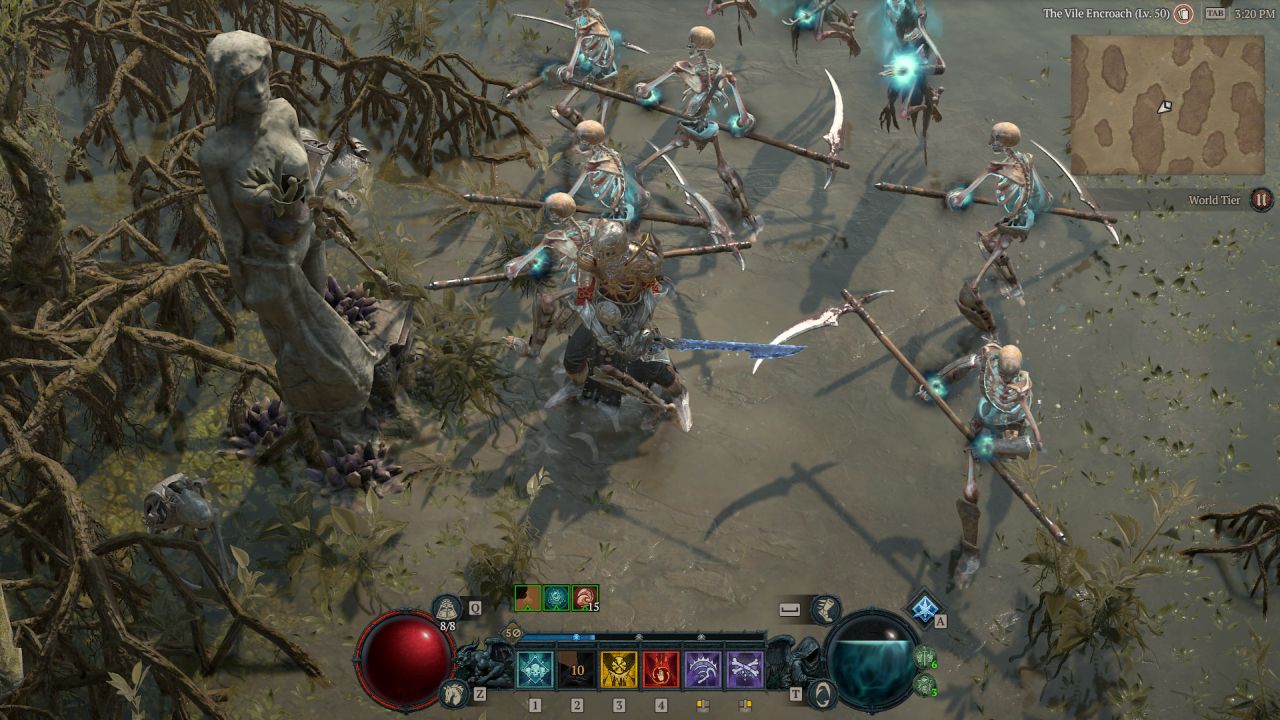
Sanctuary’s environments have awesome detail. Areas have a sinister atmosphere too, more akin to Diablo II, with plentiful gore. One of the most impressive regions is the putrid swamps of Hawezar, full of crumbling temples and diseased souls wandering between twisted mangroves. You will eventually visit Hell, and it looks spectacular with tortured bodies forming twisted walls of misery above chasms of fire. With brilliant lighting and shadows, and detailed surface textures, it is a pity you cannot rotate or tilt the camera to get a better look at everything. Even the music is strong, blending together somber, contemplative, and oppressive themes, with throwbacks to Matt Uelmen’s guitar strumming from the earlier games.
Dungeons are found all over Sanctuary and provide a decent 20 minutes of intimate exploration, typically ending with a fun boss battle. Not all dungeons are interior spaces; some are woodland trails or open fields. Each is personally instanced, so you never see other players unless they are in your party. Dungeons can be cleared of hostiles and sometimes this is required to progress. They also have random events and small pieces of story. Level structure is randomized; large chunks of geometry (like rooms and hallways) are glued together to make new layouts. For some locations, like prisons and cathedrals, this copy-pasting works fine. But for natural areas like caves, it is odd to come across the exact same corner multiple times. With over 100 dungeons, it is unlikely that many players will clear even half, but there is good incentive to run through a score or more. Completing a dungeon for the first time will grant a special item modifier that benefits one or all classes.
The five character classes offer good combat variety. There is not much in the way of customization, outside tattoos and makeup, so you will have to accept their predefined body types. The brutish Barbarian can stomp, flay, and launch whirlwind attacks with an arsenal of heavy weapons. The sneaky Rogue is good with knives, able to imbue bonus damage and lay traps. The elegant Sorcerer conjures chain lightning, blizzards, and fireballs. The steadfast Druid uses nature magic and can transform into a bear or werewolf to buff themselves. And the gaunt Necromancer can lay curses and summon minions. All classes have awesome skills and powerful combos, so it is worth spending time with each before diving deeper.
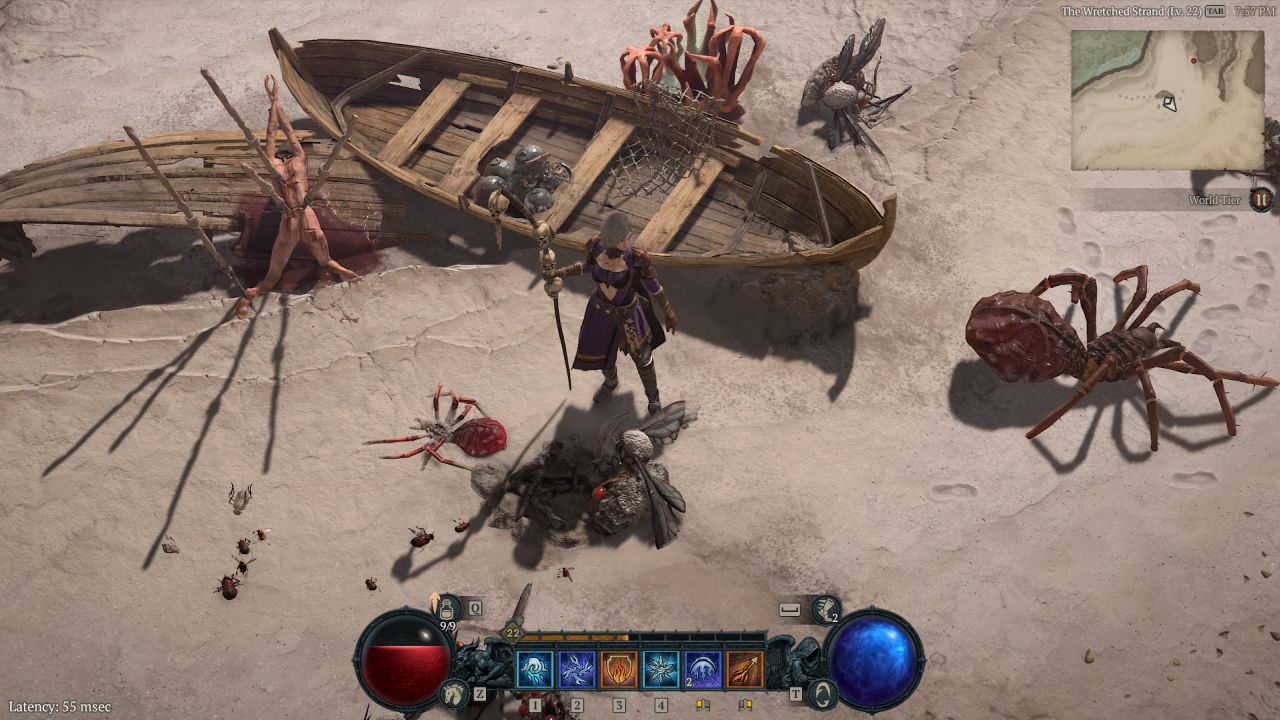
Combat is fun and crunchy, with the action turning into an enjoyable dance with repeating steps. All classes have a resource (like mana or energy) used to launch powerful skills. Basic attacks often generate the resource with much lower damage output. And there are defensive abilities that heal or protect. Six skills can be equipped, so the goal is to balance offense, resource management, and defense in order to churn through enemies and stay alive. Once you find a winning formula, it is satisfying to send limbs flying and move rapidly from one combat encounter to the next. In conjunction with the contiguous zones, starting one battle can lead you halfway across the map in no time. Since there are about 20 skills per class, with modifiers, it is somewhat cruel to only have six active. However this suits the mouse and keyboard, since there is also a dodge to avoid powerful attacks and several health potions to drink in rapid succession when that fails.
Across the first 40 levels or so, classes undergo a fair amount of change via experimentation, skill unlocks, and resource optimization. When you find a particularly good piece of equipment, its skill modifier might be the focus for a new build or at least encourage a change. Or perhaps a boss gives you trouble, like an optional druid foe did for my Rogue, forcing me to respec with poison traps and shadow-damage imbuement. This is when the game excels, as you find new and stronger combinations and progress rapidly with significantly better loot drops.
The majority of my time was spent with the Necromancer, who was fun most of the way to level 63. In the early levels, summoned skeletons fought off groups while I safely used ranged attacks. When a foe perished, a series of rapid-fire corpse explosions created a glorious cadaver cascade. At higher levels, my Necromancer would curse groups and dive into the action with a radiating blood surge, killing dozens and self-healing while my minions cleared stragglers. This allowed me to remain healthy almost perpetually. Only some elite bosses challenged this setup, since there were insufficient trash mobs to provide healing, fewer corpses to exploit, and spike damage that eviscerated my underlings. But certain Necromancer skills do generate corpses or work better against solo targets, so there should have been great incentive to switch it up. However, there was a natural resistance at higher levels, because it would mean reconfiguring expensive gear and wiping away a dance routine that had worked so well, for so long.
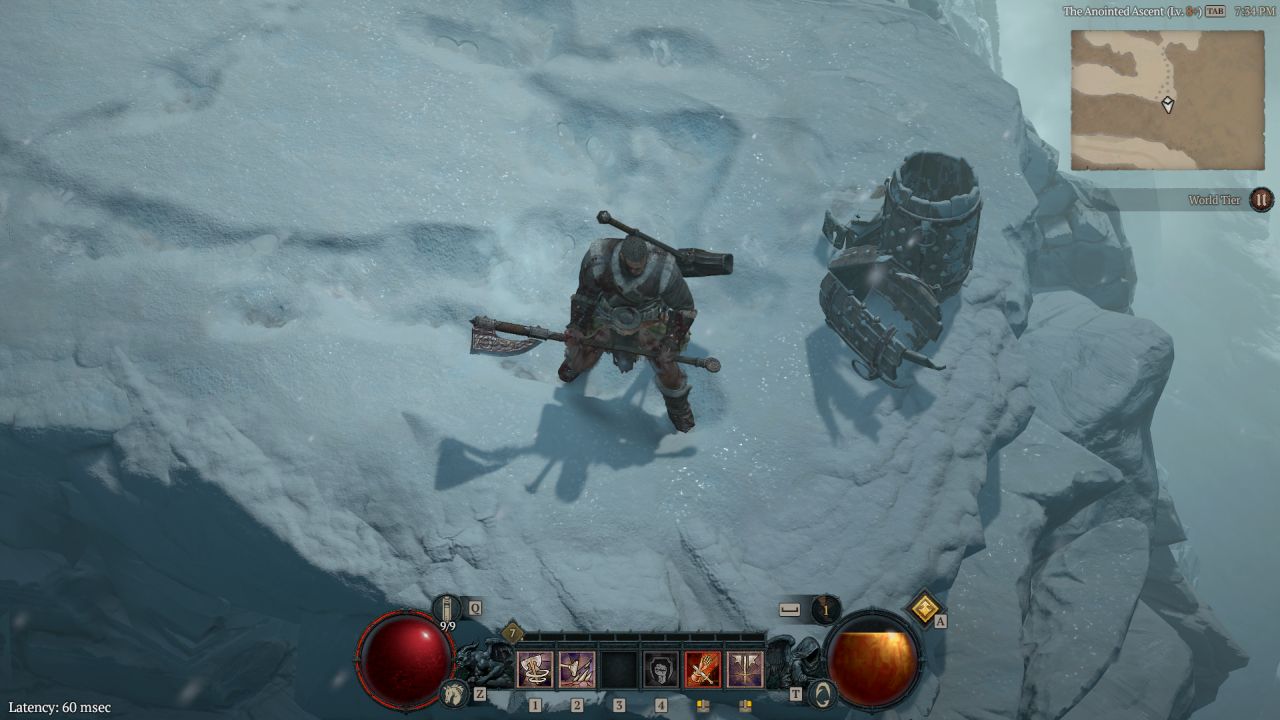
Although the leveling process is brisk up to about 50, things slow down considerably after that. To make up for the slowness, the game throws the player a bone in the form of paragon points every quarter of a level. These points unlock small benefits on a convoluted paragon board, like increasing dodge chance, attack power, or armor. Special glyphs provide additional perks, although it all feels too piecemeal and clumsy, discouraging build alterations even further. In addition, at level 60 and beyond, legendary items are as common as mud; the vast majority are not worth using and best salvaged or sold. Although higher quality items do appear, they were often sideways upgrades and hard to compare, so like paragon points, they did little to break the feeling of stagnation.
To keep players engaged at higher levels, there are repeating activities and harder challenges. The game world has four difficulty tiers, with the top two accessed by finishing capstone dungeons. The second tier is more like normal, despite being the highest setting to start with. Helltide events begin from tier three, filling rivers with blood, raining fire from the sky, and conjuring winged horrors. Endless contract quests can be completed for a magical whispering tree, which takes players all over Sanctuary to kill specific targets or clear dungeons, and the rewards are decent. Dungeons can also be modified with random sigils, found or crafted, that make them harder by opening up hell portals, applying enchantments, or just increasing enemy strength. The sigil-affected dungeons also grant better rewards, including glyph upgrades that apply wider benefits on that huge paragon board.
Diablo IV is basically a lightweight MMO which means it requires players to be online at all times. There is no offline mode and losing connection while soloing a dungeon will mean you have to start it again. There is an in-game shop, with ridiculously overpriced cosmetics to buy for real-world cash, but it can be ignored—at least the fantastic transmog system allows you to look cool while equipping any gear. Although there have been a few server issues, the game has been stable across the first two weeks. Network latency is generally low, with only a few short delays when performing actions. Rubber-banding was the most prevalent issue, warping characters backwards when moving between regions, more noticeable while using the horse, which is clunky to ride in the first place.
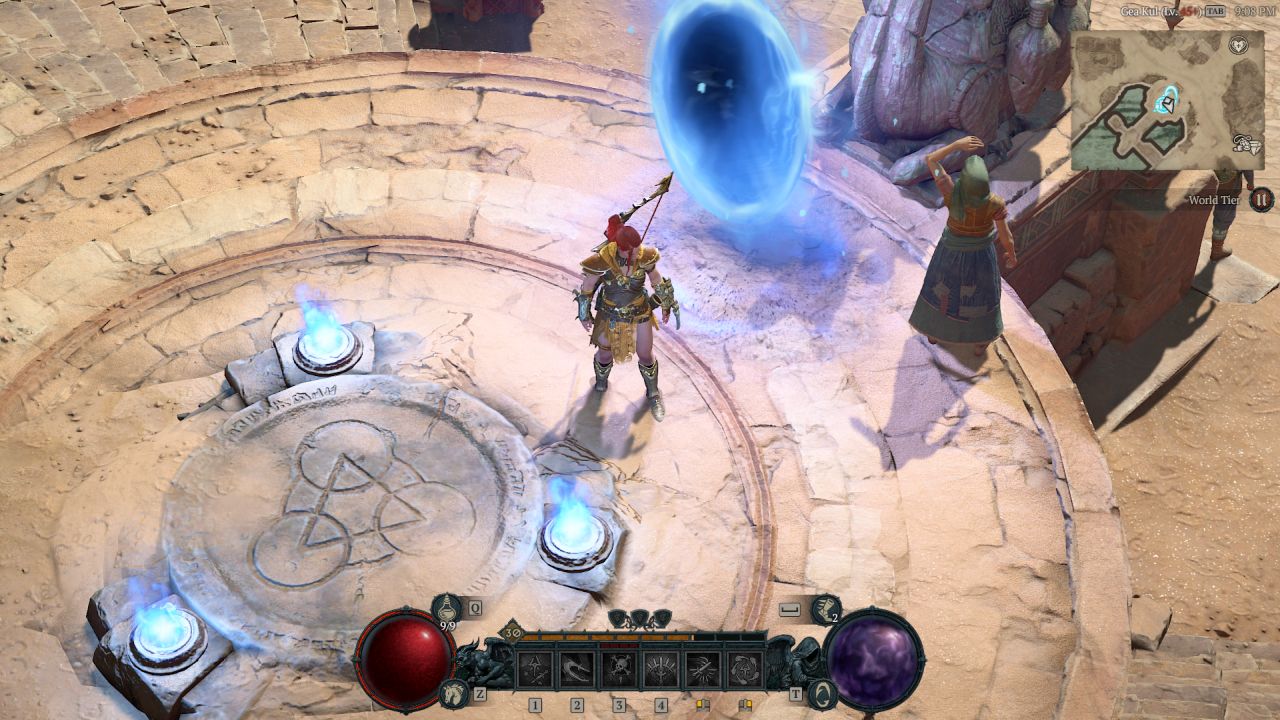
You will see many players in towns, but the game finds a good balance with how often they appear in the hostile areas. Generally it is fairly lonesome to explore, but you might occasionally team up with another player to clear an event, and then go your separate ways. One cool moment happened at an isolated dungeon where another player was waiting outside, and after asking them to join, we cleared it briskly due to our complimentary skills. The great thing about the cooperative multiplayer is that monsters scale to individual player level, so friends can battle together even at different levels.
However, the MMO style does not always work. After completing a lengthy side quest that ended in a major boss fight, I opened my inventory to sort through loot. A few seconds later, another player arrived and spawned the very same boss right on my lap, making me realize that my actions have no real consequence. Equally disappointing are the timed events that bring players together. Legion battles generate combat spam with 6-8 players charging through foes around a loop. World bosses are less frequent, and they’re so big the camera zooms out so you can barely see tiny players doing their respective dance moves until the beast is felled. With so much chaos for both fights, it is impossible to know if you are really having an impact.
Player vs. player combat is available if you are keen to test your skills against real humans. The competitive action takes place in dedicated regions where you kill monsters and try to extract a special resource, alerting nearby players, like the Dark Zone in The Division. Then, a player who is twenty levels above you will come along and kill you before you can blink. There does not appear to be effective balancing in the PvP arenas. Experienced players preyed on the weak as they exited towns and most encounters were against players 5-20 levels above me, with only a few lucky kills to my name. Sometimes these areas could be explored for 30 minutes without coming across a single soul, so those hungry to collect player’s ears (the franchise-appropriate reward for murder) might find it inconsistent. PvP does not seem worth attempting when there are far better ways to enjoy your time in the game.
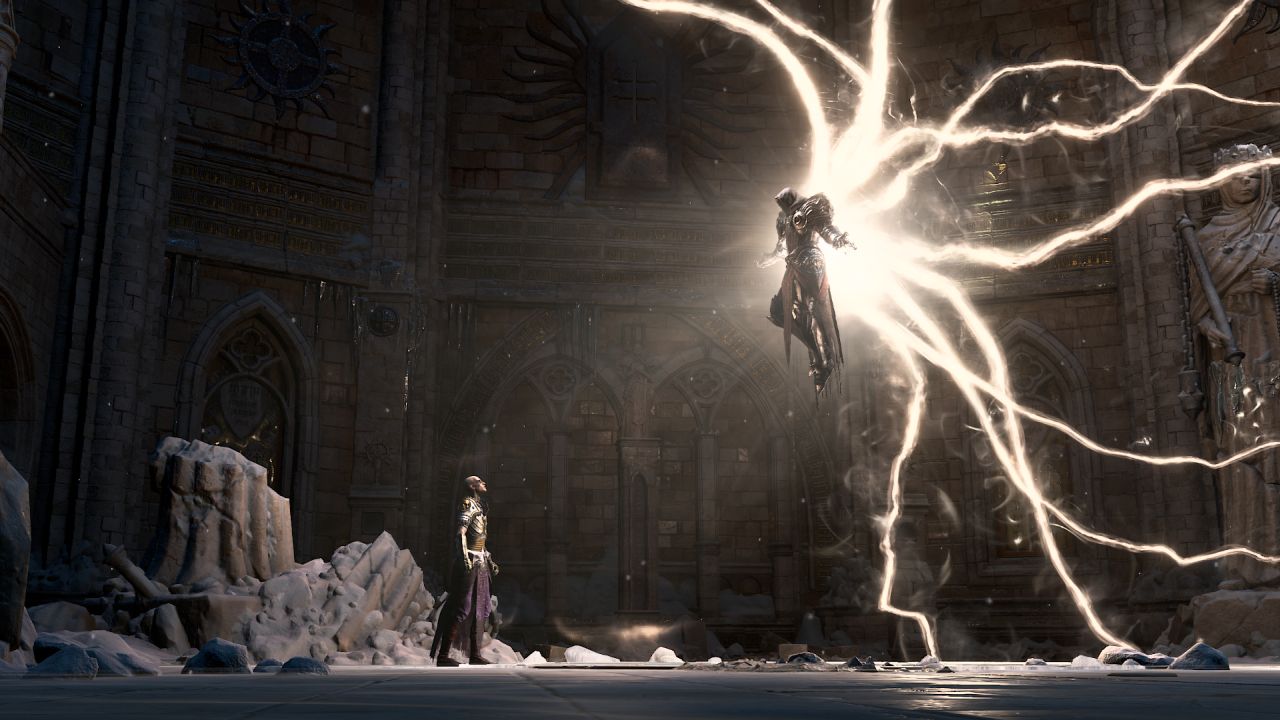
Diablo IV is a natural evolution for the action-RPG franchise with a large world to explore and simple MMO components that help make it entertaining for hours. With fantastic, dark environments and great monsters, the franchise has never looked anywhere near this good. It is also founded upon some enjoyable combat, across five varied classes, with good experimentation and satisfying leveling in the initial few dozen hours. At higher character levels, progression stagnates and the battle dance becomes ingrained. Fortunately, despite the always-online requirement, the network experience is good and other players help to make the adventure more fun. Diablo IV is a successful merger of the last two games in the series and although parts of it are merely a tasty appetizer of things to come, it still provides a hell of a good time.
 Comments
Comments



















